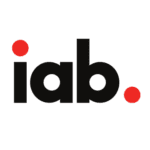What is Transactional Data?
Transactional customer acquisition data refers to the information generated during the course of a customer’s purchase or transaction, such as product details, purchase history, payment information, and more.
In today’s digital era, data is the lifeblood of effective marketing strategies. Among the various types of data available to marketers, transactional data holds tremendous potential for unlocking valuable insights and driving business growth.
Why Utilize Transactional Customer Acquisition Data?
Transactional data holds immense potential for marketers looking to improve customer engagement, drive revenue growth, and optimize their marketing efforts. By harnessing the power of this data, marketers can enhance customer segmentation, personalize experiences, optimize pricing and promotions, improve inventory management, boost customer retention, and uncover upselling opportunities. Leveraging transactional data effectively allows marketers to stay ahead of the competition, deliver personalized experiences, and ultimately build stronger and more profitable customer relationships.
Enhancing Customer Segmentation
Transactional data provides marketers with a wealth of information about customer behavior and preferences. By analyzing this data, marketers can segment their customer base more effectively, grouping individuals based on their purchase history, average order value, frequency of purchases, and other relevant parameters. This allows for the creation of targeted marketing campaigns tailored to specific customer segments, resulting in improved engagement and higher conversion rates. For example, a catering company may begin to offer tailored packages for weddings and fiftieth wedding anniversaries by tracking the age of visitors to their website, segmenting visitors from their twenties to forties for wedding offers and those fifty and up for anniversaries, then target them with specific emails and offers.
Personalizing Customer Experiences
One of the key advantages of transactional data is its ability to enable personalized marketing experiences. By understanding customers’ previous purchases, marketers can provide personalized recommendations and offers that align with their interests and preferences. For example, if a customer frequently purchases running shoes, a marketer can send targeted emails promoting new running shoe models or related accessories. Such personalized interactions enhance customer satisfaction, foster loyalty, and ultimately drive repeat purchases.
Optimizing Pricing and Promotions
Transactional data is invaluable when it comes to pricing and promotional strategies. By analyzing customer purchase patterns, marketers can identify price thresholds, evaluate the effectiveness of discounts and promotions, and determine the optimal price points for different customer segments. This data-driven approach enables marketers to make more informed decisions regarding pricing strategies, maximizing revenue and profit margins by cutting down on unnecessary spending.
Improving Inventory Management
For businesses that maintain inventory, transactional data plays a crucial role in optimizing stock levels and supply chain management. By analyzing sales data, marketers can identify patterns and trends in product demand, enabling them to make accurate demand forecasts and optimize inventory levels accordingly. This ensures that products are readily available when customers need them, reducing the risk of stockouts or overstocking situations.
Customer Retention and Loyalty Programs
Transactional data helps marketers identify customers who are at risk of churning or those who have high potential for long-term loyalty. By monitoring purchase frequency, recency, and other relevant metrics, marketers can design and implement targeted retention strategies. For instance, offering exclusive discounts, rewards, or personalized communications to loyal customers can foster stronger relationships and increase customer retention rates – you have probably signed up for at least one store loyalty card before, meaning you’ve experienced a customer loyalty program before – and probably have used it.
Upselling and Cross-selling Opportunities
Transactional data can uncover opportunities for upselling and cross-selling. By analyzing purchase history, marketers can identify products that are frequently purchased together or products that customers tend to upgrade over time. This information can be used to design targeted campaigns aimed at upselling complementary products or encouraging customers to upgrade their purchases. Such strategies not only drive additional revenue but also enhance customer satisfaction by offering relevant and valuable recommendations. For example, a company selling bespoke dresses could target buyers during the summer and spring wedding seasons with offers do change out the fasteners or materials on their dresses to make them more lightweight for being outdoors for extended periods or to make them more comfortable.




